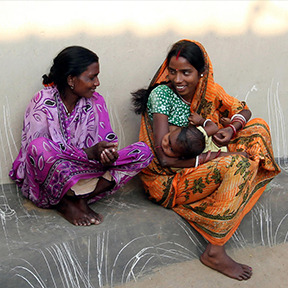Assess a Program’s Gender Status
Objectives:
- Understand the difference between a gender-blind and gender-aware program
- Know the difference between a gender exploitative, accommodating and transformative program
- Determine where along the gender equality continuum your current program or strategy sits
- Use a checklist to identify which key steps to focus your attention for a more gender transformative program
Key Output:
The key steps in the SBCC process that your team needs to focus on to make your program gender transformative.
Resources:
- P-Process
- Gender Equality Continuum
- Trending Topic: Gender
- IGWG Gender and Health Toolkit
- Gender Guide for Health Communication Programs
Checklists:
Activity Handouts:
Templates:
Before you determine where and how to integrate gender into an existing SBCC or social marketing program, you need to determine where your current program stands, what information is still needed and how that information will impact the design, implementation and evaluation of your program. An SBCC or social marketing program should be designed to be either gender transformative, contribute to gender transformation or at the very least not reinforce gender inequalities and stereotypes in pursuit of project outcomes.
A gender transformative approach attempts to transform the underlying social structures, policies and social norms to achieve gender equality and promote positive change. This is done by:
- Fostering critical examination of inequalities and gender roles, norms and dynamics
- Recognizing and strengthening positive norms that support equality and an enabling environment
- Highlighting the position of women and girls relative to men and boys while taking into account the added effects of marginalization (e.g., the intersections of gender and social class or gender, class and ethnicity)
The Gender Equality Continuum, which is a planning and diagnostic tool, emphasizes two key principles important for program implementation:
- Programs must never be gender exploitative. While some interventions may contain elements that are (intentionally or unintentionally) accommodating, the aim should always be to move them toward transformative approaches.
- Programs should ultimately work toward transforming gender roles, norms and dynamics for positive and sustainable change.
When revisiting your existing SBCC strategy or marketing plan remember that gender transformation is a process and does not happen overnight. Every program is unique with a different start and end point. The context in which you work may vary from country to country, community to community.
Activities
![]()
Activity 0.1: Understanding and Applying the Gender Equality Continuum
This activity will help you understand the Gender Equality Continuum and how to apply it to your program. The Gender Equality Continuum tool will help you think about and assess if, and how well, your interventions are currently identifying, examining and addressing gender considerations. Once you recognize where your program sits along the continuum, you will be able to better answer the questions in the checklist.
![]()
Activity 0.2: Using a Checklist to Review your Program's Current Status
This activity will use a checklist to examine your current SBCC strategy or marketing plan to see how well gender is integrated into your program. The checklist will ask a series of questions to help you to determine the status of your program. Based your responses, you will be able to better identify which steps in the strategy design process to focus your attention.
Follow the Steps to Strategy Design
Now that you have assessed your current program it is time to follow the steps of Strategy Design. Each step will help your team discover new information and revise the existing components of your SBCC strategy or marketing plan.
You may want to go through the full step-by-step guide, starting with setting a gender transformative vision, or you may choose to focus your attention on specific areas based on your responses to the checklist and where you sit along the Gender Equality Continuum. You can access each of the steps once you get started.

